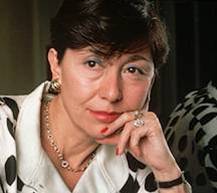

 字體:小 中 大
字體:小 中 大 |
|
|
|
| 2007/04/06 11:12:35瀏覽627|回應0|推薦2 | |
Kristeva, Julia. “Fantasy and Cinema.” Intimate Revolt: The Powers and Limits of Psychoanalysis. Trans. Jeanine Herman. Chapter 5What is fantasy? The Greek root-fae, faos, fos—expresses the notion of light and thus the fact of coming to light, shining, appearing, presenting, presenting oneself, representing oneself. When he uses the word Phantasie, Freud understands it as the intimate creation of representations, not the faculty of imagining in the philosophical sense of the word. German has another term for this: Einbildungskraft. Since then, the word “fantasy” has designated an imaginary scenario in which the subject depicts in a more or less distorted way the fulfillment of a desire, ultimately sexual. So at the outset the term in French does not at all indicate the field of the imagination but that of particular imaginary formations. Which ones? On this point, you would do well to consult The Language of Psycho-Analysis by Laplanche and Pontalis, which sums things up better than I can do here. But since I will guide you through this reading, I will remind you briefly of the distinction between diurnal fantasies, subliminal fantasies, unconscious fantasies, and, among the latter, primal fantasies. Diurnal fantasies are daydreams, those novels without an audience in which, in a more or less paradisiacal or infernal way, we recount our desires, in counterpoint to our real destinies: our fairytales or nightmares. There are unconscious daydreams with strong sexual connotations, reflexively conscious or not, which are the precursors of hysterical symptoms: these are unconscious subliminal fantasies. Finally, unconscious fantasies in the strict sense—those linked to unconscious desires—are situated at the foundation of the progredient trajectory that ends in dream. The impossibility of gaining access to this unconscious fantasy and the repression of the fantasy are the source of symptoms. Analytical work consists of making the fantasy conscious—formulating the phantasmatic narrative and interpreting it—in order to dissolve the symptom. Finally, Freud supposes the existence of far more archaic and profound fantasies, which he calls primal fantasies: these are scenarios concerning our origins, which he supposes go back through generations cerning our origins, which he supposes go back through generations phylogenetically. A presubjective structure, the primal fantasy, like the fantasy of the primal scene, the fantasy of castration, and the fantasy of seduction, does not necessarily constitute a sedimentation of individual experiences but hereditary schemas. The child invents these scenarios, which he represses, but the invention is only an eternal return of hereditary schemas that have actually taken place in preceding generations and are mysteriously encrypted in the psyche: “Children in their phantasies are simply filling in the gaps in individual truth with prehistoric truth.” |
|
| ( 知識學習|語言 ) |










